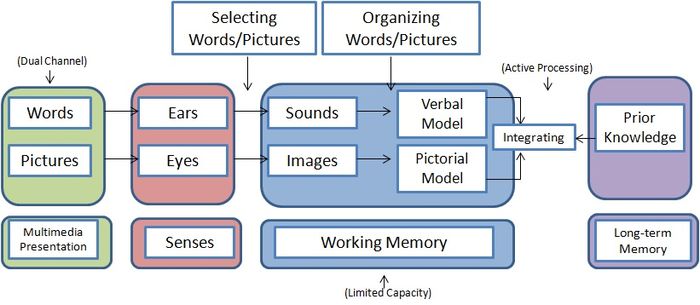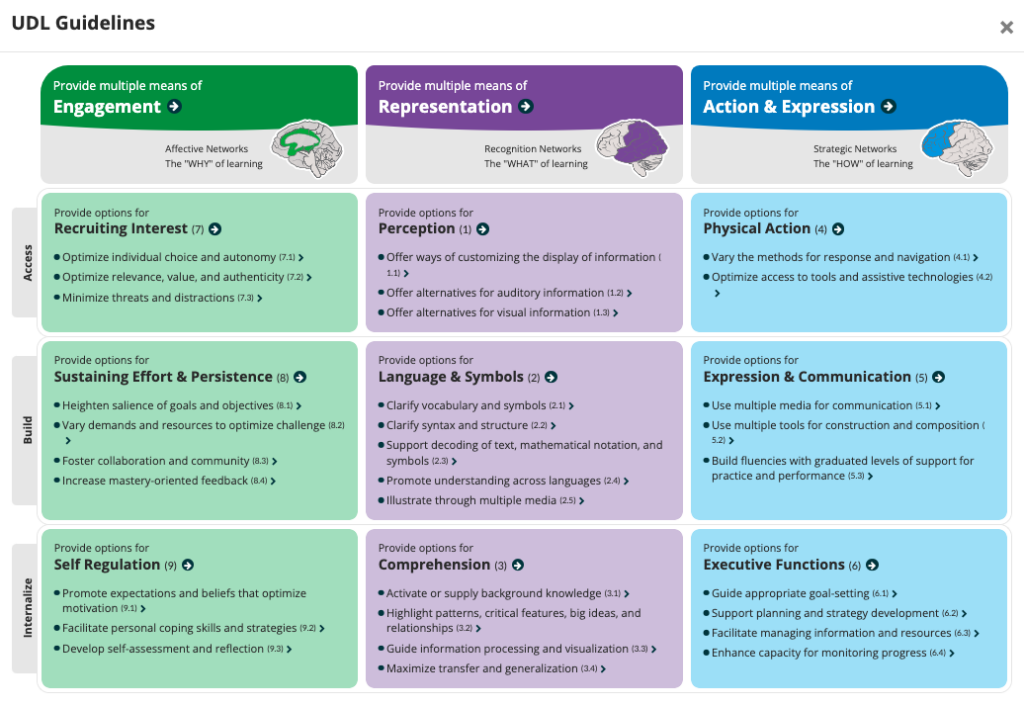Cover photo by DeepMind on Unsplash
Learning Styles Debunked
This week in tech we learned about multimedia techniques. What I found most interesting was the argument that we retain things better when both words and pictures are paired together. This differs from a widely believed idea that states each individual is a different type of learner (ie: Visual, auditory, kinesthetic). Interestingly enough, last term our philosophy professor told us that these different “learning styles” were actually a myth, and most of our class had no idea. We learned that, in reality, it’s the combination of multiple media that truly helps the brain to retain information. This lesson in technology today has further solidified that for me and has helped me understand that providing both audio and visual (words and pictures) helps everyone retain the information better (rather than specific learners). After a quick google search, you can find how much research has been done to debunk this learning style myth. However, somehow a majority of the population still believes this learning style myth, even teachers. I’m extremely grateful that I was able to be taught this so early in my teaching career as I would have gone on believing it otherwise. Below I have included multiple resources further describing this.
So, after realizing that we can’t exactly teach according to these specific “learning styles”, it got me thinking as to what we should be teaching according to. Because we still want to be reaching all of our learners. This reminded me of the Universal Design for Learning (UDL) which provides specific guidelines for making your instruction universal.
I personally like the UDL because of how well it is organized. They provide specific points for each section which makes it very easy to follow. Even though we spent some time last term looking at making classes such as physical health education universal, I’m looking forward to learning more about universally designed learning in the area of tech. The UDL is something I strongly believe in and hope to utilize throughout a lot of my teaching career, so I’m happy to see that it’s being talked about in multiple education courses here at UVic.
- Misconceptions of Learning Styles
- The Biggest Myth In Education
- Walsh, K. (2007). Learning styles: do they really exist? Medical Education, 41(6), 618–620.
- Riener. (2010). The Myth of Learning Styles. Change, 42(5), 32–35.
Interactive Website Tutorial
This week in tech I was able to create a website tutorial. We learned how to use Screencastify to record our screens which was super cool. Through making this video, I learned a lot about recording videos, editing, doing voiceovers, and making captions. It took me so much longer than I initially expected and I had to re-record multiple times. Early on I decided that I wanted my video to have captions to make it as universally accessible as possible. This meant I would have to upload it to youtube, which then meant I would have to create a YouTube channel to upload to. The entire process took me about 4 hours in total but I’m super happy with how it turned out and feel like it was a great learning experience. I also added some H5P content which makes the video interactive! I think this is a super handy tool that could make learning a lot more interactive and fun for students. You could use it as a study tool for students where you take a video already on youtube that is teaching something and add questions throughout, or you could do it with the goal of teaching. I think it’s great because it helps keep viewers focused and on track, and it helps teachers know if every student is understanding.
All and all, I hope the video helps everyone navigate my website a little bit better, enjoy!





